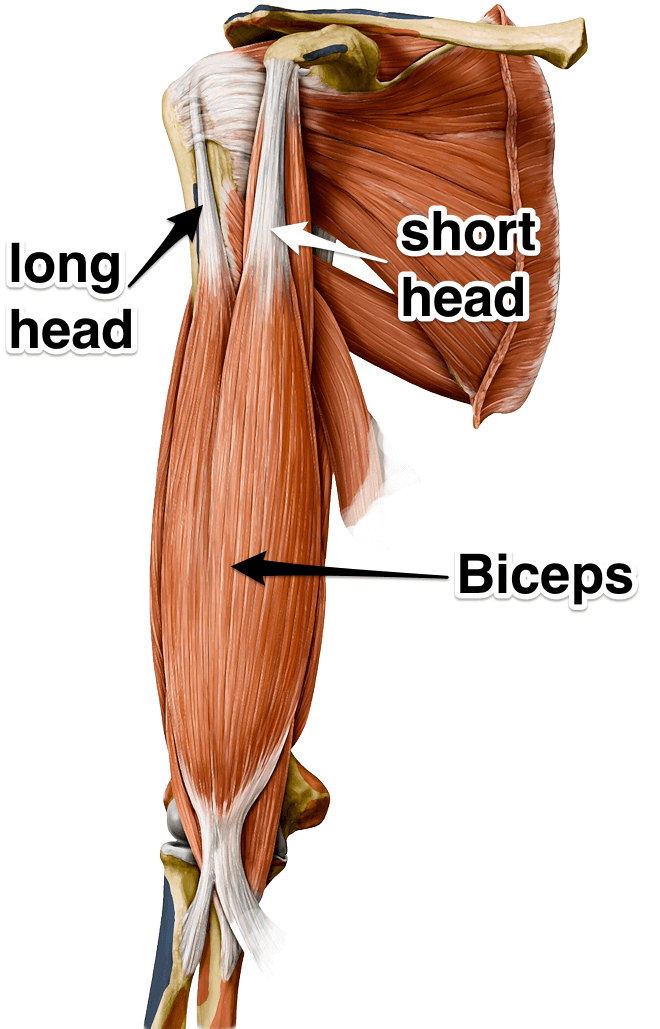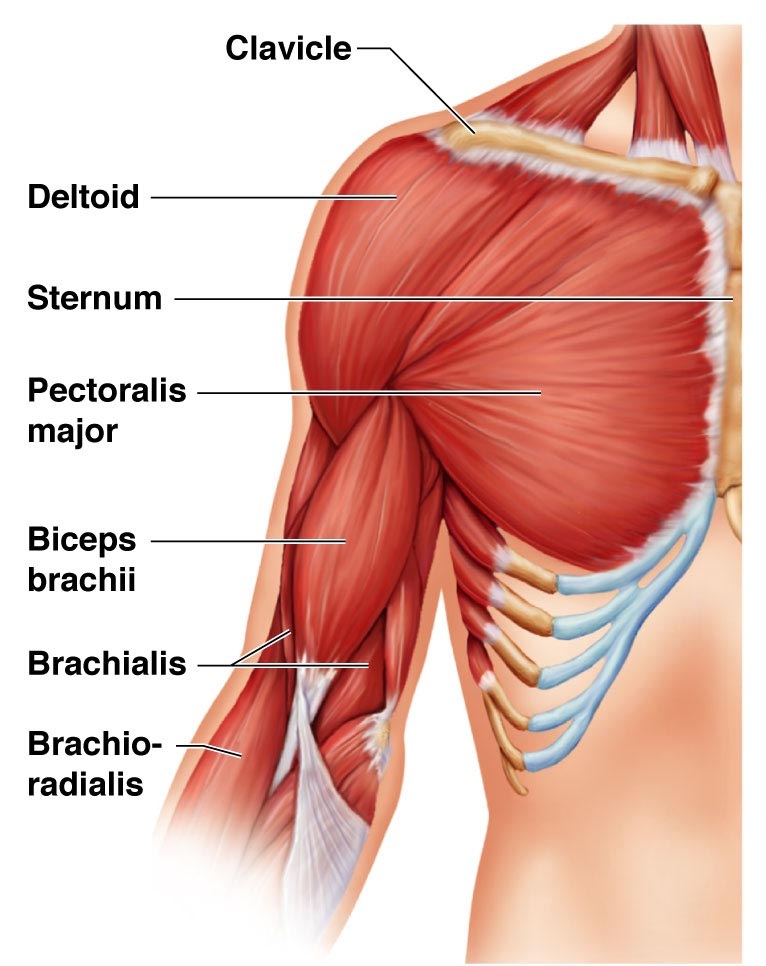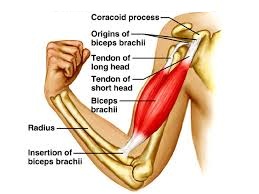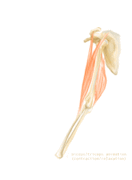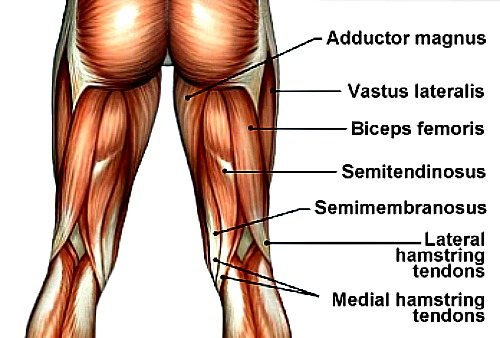Biceps Brachii
Definition
Bi = two Ceps = heads
A muscle in the upper arm
Origin
One head originates from the coracoid process of the scapula (short)
Another head from the supraglenoid tubercle (long)
The tendon of the long head runs in the bicipital groove of the upper humerus and joins the short head in the middle of the arm and forms the muscular belly
Insertion
The muscle gets inserted into radial tuberosity (Radius) and by a sheet of tendon into the the deep fascia of the forearm
Relations
Deep to it lie two muscles : Coracobrachialis muscle & Brachialis muscle
In the forearm brachioradialis muscle is adjacent to the biceps
Blood Supply
Brachial artery - the continuation of the axillary artery
Nerve Supply
Musculocutaneous nerve - (C5, C6, C7)
Actions
Flexion of elbow
Flexion of shoulder
Supination of radioulnar joint
Antagonist
Triceps brachii muscle
When the triceps contracts the elbow is flexed and th triceps relaxes and vice versa
Biceps Femoris
Definition
Bi = two Ceps = heads
A muscle in the Postrioe compartment of the thigh
Origin
One head originates from the tuberosity of the ischium
Another head from linea aspera of the femur
Insertion
Into the head of the fibula
Relations
Proximally covered by gluteus maximus
Elsewhere superficial
Deep to it semimembranosus proximally and the sciatic nerve, adductor magnus and the lateral head of gastrocnemius
Medially - Semitendinosus and semimembranosus, the common fibular nerve along the medial border of the tendon of biceps femoris
Blood Supply
Deep femoral artery
Perforating arteries from profunda femoris artery
Nerve Supply
Long head - tibial nerve
Short head -- Common fibular nerve
Actions
Flexes knee joint
Laterally rotates knee joint (when knee is flexed)
Extends the hip joint (long head only)
Antagonist
Quadriceps muscle
Applied Anatomy
Avulsion of the biceps femoris tendon is common in sports - explosive bending of the knee as seen in sprinting
* * * * * * * * * * * * * * * * *


